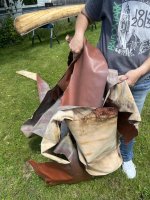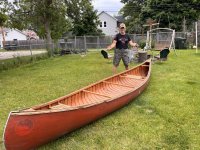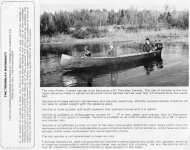I'm only familiar with the vinyl skin from another Canadian canoe company, Tremblay. Could be the same company as yours, just rebranded, I'm not sure. I think there was a lot of interplay between the Quebec canoe companies of the time. The vinyl skin was an "improvement" that was used on wood canoes for a fairly short period of time. Benson might know more of the history, but I believe it was thought to be a less time consuming way to manufacture wood/fabric canoes.
I have direct experience with it, as our school canoe club used to buy Tremblay canoes on a regular basis. The bare hulls looked very similar to yours, in that almost any grade of cedar was slapped on, and the exterior often seemed like it hadn't even been sanded. They were rough but sturdy canoes, and very cheap. I think it the 70's we were paying less than 200 bucks per canoe.
The vinyl covering was known as verolite. Our canoes received rough use, and the verolite did not last long. It was inferior to canvas in the sense that it sliced easily, well easier than canvas. All of ours ended up being recanvassed, except for one I kept for myself. I probably should have kept the verolite on it, could have been a museum piece by now, lol.
In regards to the question in other thread about where to start, if you could post some more detailed pictures, it could help spark conversation. For instance, order of procedure could depend on where the bulk of damage is, if the rib tips are rotten too, things like that.





